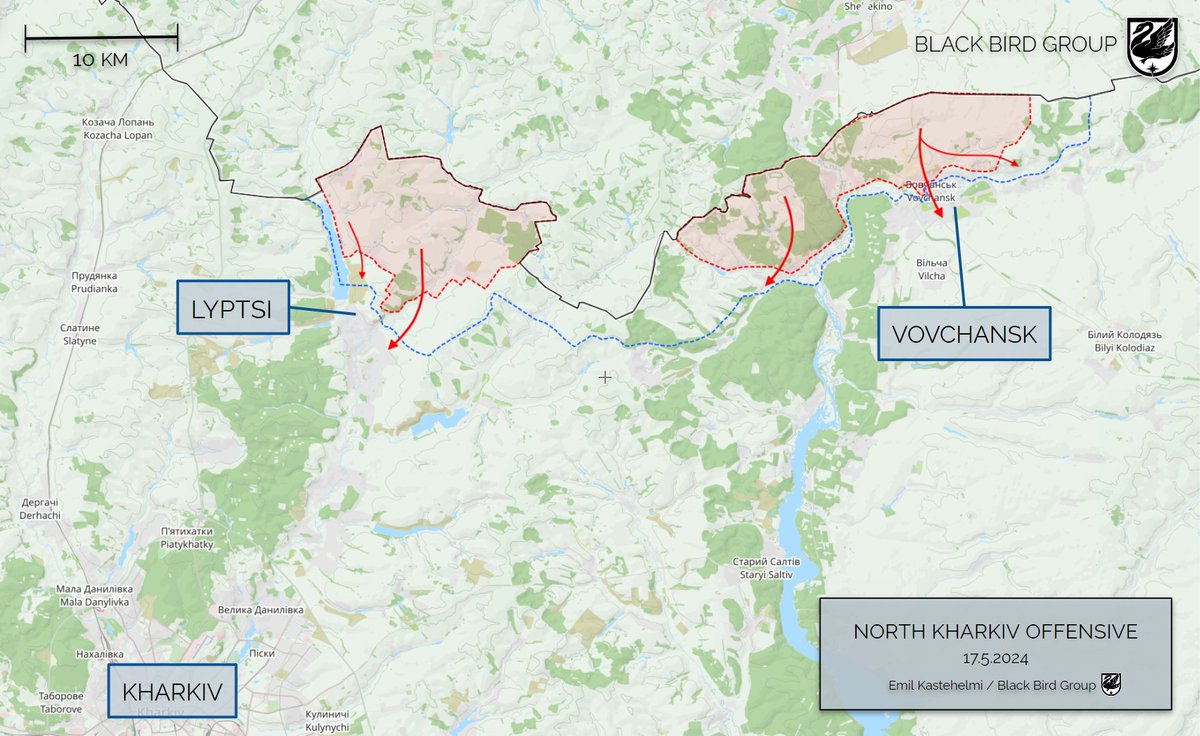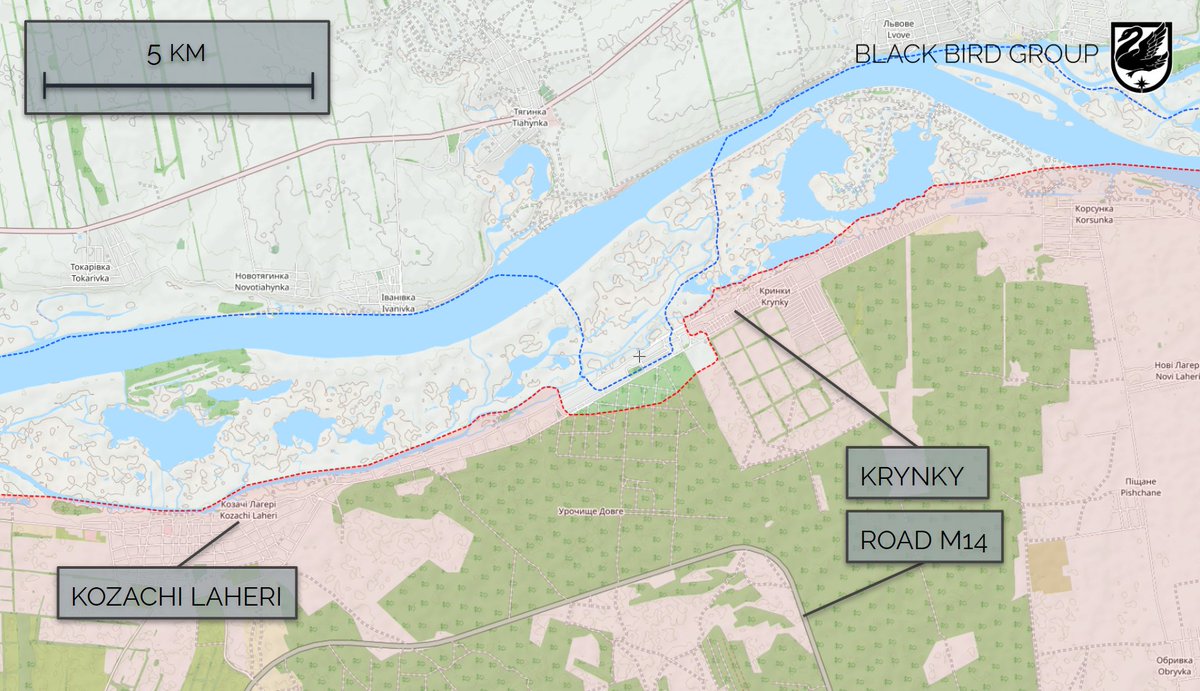The Kharkiv offensive has been ongoing for a week. Russia had some initial success, but Ukraine has been able to restrain Russian forces from advancing deeper.
There are many narratives and claims surrounding the situation. First, why was Russia able to advance so quickly? 1/
There are many narratives and claims surrounding the situation. First, why was Russia able to advance so quickly? 1/

"Digital scanning" of the border area is almost continuous. The Russian air reconnaissance, electronic warfare and strike teams and are active in many areas. This made it difficult for Ukraine to prepare heavy defences or to concentrate a large amount of troops at the border. 2/
For Ukraine, the reasonable option was to use the depth to their advantage, as they did. A few kilometres from the border, the Russians can rely less on prepared positions and other infrastructure on Russian territory, and they have to bring their supporting elements forward. 3/
At the moment the Russians are attacking towards Lyptsi and trying to push through Vovchansk. In Lyptsi, a long chain of villages begins, which would force the Russians to fight through over 17 km of built areas. Vovchansk is a logistical chokepoint. 4/ 

Losing Vovchansk would be unfortunate for Ukraine, but in the big picture this direction bears very limited strategic meaning. Russia could capture large areas, for example such as in this map, without actually altering the general strategic situation radically. 5/ 

The Lyptsi direction is more threatening, but RUS has to make significant progress to even get Kharkiv city on rocket artillery range. The initial push was reportedly made with a force of around five battalions, but as RUS wants to go further, it needs to commit more forces. 6/
Russian goals:
One of the likely key objectives is to tie Ukraine's reserves for this “secondary” direction. The attack forces Ukraine to react by moving troops to the north, which in turn creates better conditions for Russia to advance in, for example, the Donetsk region. 7/
One of the likely key objectives is to tie Ukraine's reserves for this “secondary” direction. The attack forces Ukraine to react by moving troops to the north, which in turn creates better conditions for Russia to advance in, for example, the Donetsk region. 7/
Another objective, which Russians have spoken about, is creating a buffer zone between Belgorod and Ukraine.
This zone could shield Russian territory from AFU raids, which have usually been conducted by Russian volunteer units from Kharkiv region towards Belgorod. 8/
This zone could shield Russian territory from AFU raids, which have usually been conducted by Russian volunteer units from Kharkiv region towards Belgorod. 8/
However, as Russia has been able to penetrate as far as 8 km from the border, they may want to reinforce success. Russia can bring in more forces without significantly undermining their capabilities to continue offensives in Chasiv Yar and Pokrovsk directions. 9/
The worst case scenario would be a situation where Russians could get Kharkiv on tube artillery range. This would set the stage for future operations to take over the entire city. However, at the moment they don’t have enough forces in the area to capture the city of Kharkiv. 10/
In the best case scenario, Ukraine is able to stabilize the front without overcommitting their reserves and maybe even push the Russians back a bit, once the attacker is attrited. However, a counterattack to remove Russia completely from the north Kharkiv region is unlikely. 11/
This is Russia's most significant activation in the northern Kharkiv region since the beginning of the war. There are some unclear aspects which may alter the success of the defender, like the quality of Ukrainian fortifications and other defensive preparations. 12/ 

Further reading: A more detailed breakdown of the current attacking forces can be found here by our group member @Inkvisiit. He has done a great job at following the Russian ORBAT in Kharkiv. 13/
https://twitter.com/Inkvisiit/status/1791206900198957166
Our team at @Black_BirdGroup continues to monitor the situation. It took a while to make this thread, as I just recently came back from a two-week Ukraine trip. I’ll write about my observations there later. 14/14
Our map: scribblemaps.com/maps/view/The-…
Our map: scribblemaps.com/maps/view/The-…
• • •
Missing some Tweet in this thread? You can try to
force a refresh














